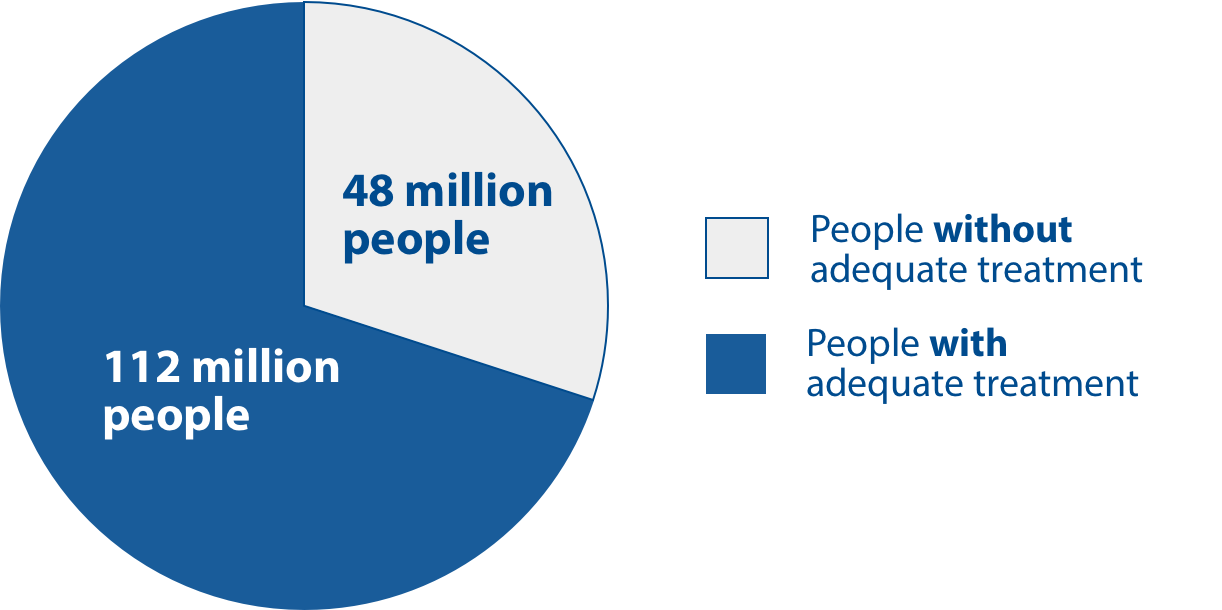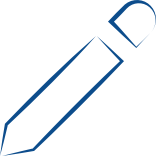Pain is a widespread issue
Every fifth person is affected by chronic pain worldwide. Back pain is particularly common. This pain is often treated with medication – with the risk of severe side effects and potentially becoming dependent. With auricular vagus nerve stimulation, pain can be treated without these side effects.
People affected by chronic pain


At least 30% of the affected people living in the US and Europe are not receiving adequate treatment.
This has devastating consequences on their quality of life.

> 400 billion euro
In the entire EU, more than 400 billion euro are spent on the treatment of chronic pain per year.
Pain treatment methods
There are various forms of pain treatment available. Which treatment is suitable depends not only on where the pain occurs, but also on the age of the patient, medical history and the duration of the pain. The choice of pain treatment should be as individual as the patients themselves and must be tailored to their specific needs.
In most cases, pain is treated with painkillers (analgesics). There are various types of painkillers that have varying degrees of potency. For mild to moderate pain, peripherally-acting painkillers such as paracetamol are used. Severe and chronic pain are often treated with opioids. These act centrally on the nervous system. They are highly effective but also have undesirable side effects and can lead to drug dependence. When it comes to medication, it is important to find the right balance between their effectiveness against pain and the occurrence of side effects.
Invasive treatment methods include orthopaedic or neurosurgical procedures, amongst others. In the case of severe pain, pain pumps can be implanted that release painkillers directly in the body. Chronic pain can also be treated with spinal cord stimulators. Spinal cord stimulators are implantable devices that send impulses to the nerves in the spinal cord, blocking the transmission of pain.
Minimally invasive treatment methods use the smallest possible procedures to achieve the biggest possible benefit for patients. The treatments are carried out in outpatient clinics using needle, injection, or puncture techniques, including for nerve stimulation. VIVO is such a minimally invasive treatment and offers a new alternative to pain treatment, which is associated with much less risk and side effects. The VIVO treatment reactivates the body’s own pathways for pain relief.
Non-invasive therapy includes a number of treatments such as ergotherapy, physiotherapy and electro therapy as well as nerve stimulation with surface electrodes. Psychological treatments such as cognitive behavioural therapy also belong to this category. These treatments are primarily used in the case of chronic pain or where there is a risk of pain becoming chronic. Patients get to know their behavioural patterns in connection with pain. They work on steps to change these patterns.
Method
The vagus nerve
There are twelve cranial nerves in the human body. The most important nerve in the parasympathetic nervous system, a part of the autonomic (involuntary) nervous system, is the vagus nerve. It regulates “rest and digest” phases in the body as well as important body functions (e.g. inflammatory response) and transfers information between the organs and the brain. It runs from the brain stem to the organs in the abdomen as well as to the outer ear. In the outer ear, the nerve fibres of the vagus nerve are easily accessible.
Chronic pain is often accompanied by (chronic) misregulation in the autonomic nervous system. This is where auricular vagus nerve stimulation comes in, modulating the perception and processing of pain with long-term effect through electrical impulses.
Auricular vagus nerve stimulation (aVNS)
aVNS relieves pain without the known side effects of medication. The minimally invasive method works via three small needle electrodes that a doctor attaches to the outer ear. The vagus nerve is electrically stimulated via these electrodes. The stimuli are transferred directly to the brain, where they stimulate the body’s own pain relief mechanisms.
When playing this video, the third-party provider Youtube (YouTube, LLC) loads scripts on your end device, stores cookies and collects personal data.
Data is transferred to the USA, which does not have EU-compliant data protection.
Advantages of aVNS
Pain is individual – as must be its treatment. aVNS with VIVO enables treatment that is tailored to the pain perception of the individual patient and promises sustainable results. By using three small needle electrodes in the outer ear aVNS treatment with VIVO is minimally invasive and well tolerated in comparison to medication.


